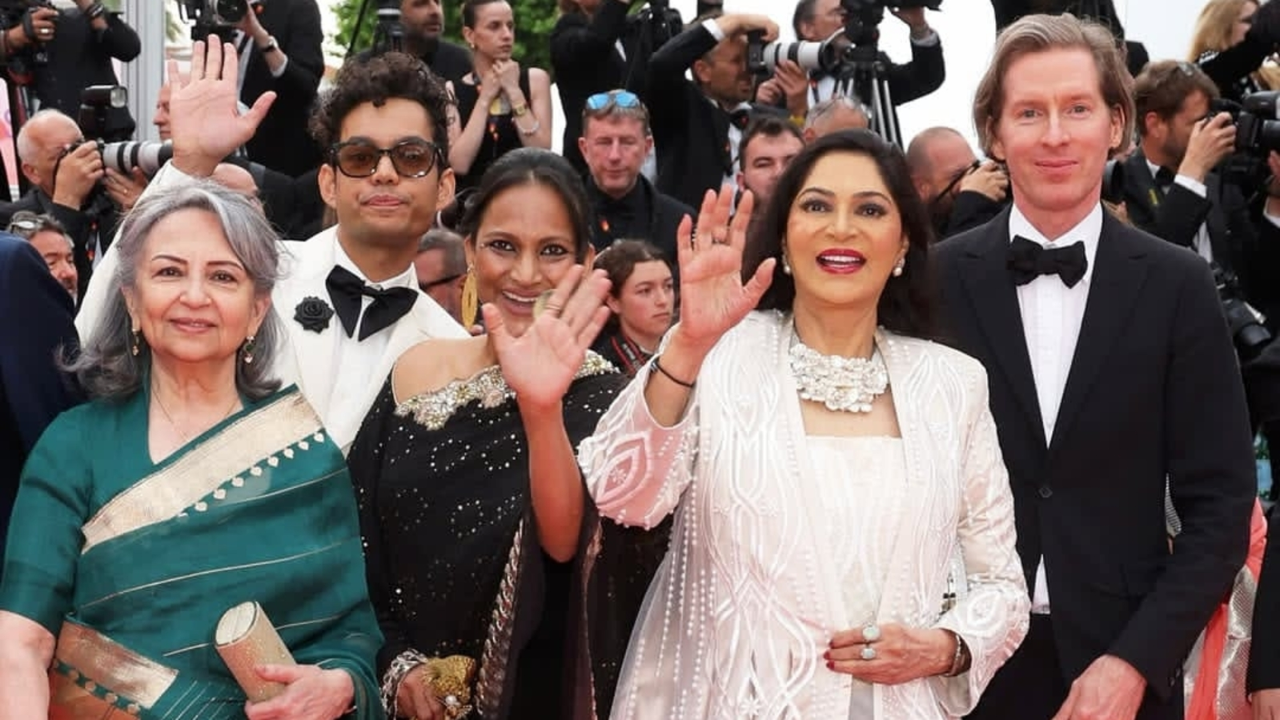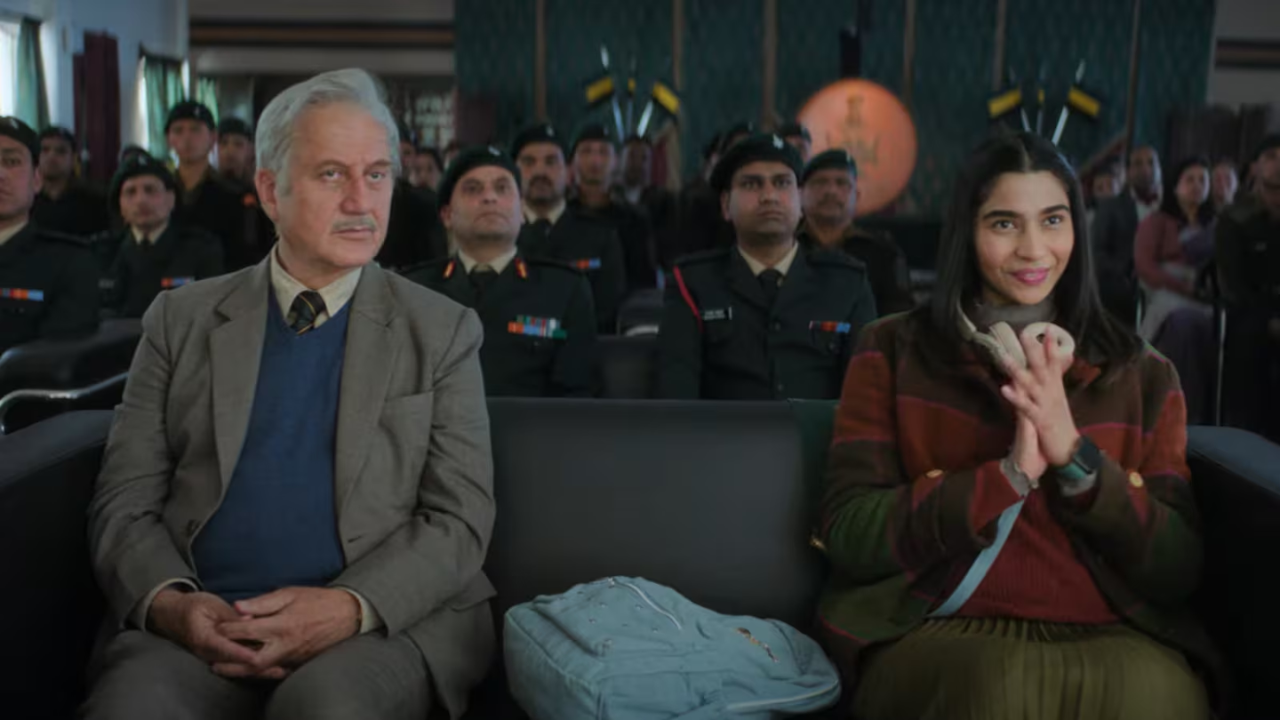Sharmila Tagore Talks About Grueling Shoot of Satyajit Ray`s Aranyer Din Ratri
Updated on: 21 May, 2025 06:18 PM IST |Amruta Karulkar

Sharmila Tagore and Simi Garewal at Cannes 2025
Satyajit Ray`s 1970 classic, Aranyer Din Ratri (Days and Nights in the Forest), recently garnered a standing ovation at the Cannes Film Festival following its meticulous restoration. The screening, attended by stars Sharmila Tagore and Simi Garewal, brought back vivid memories of the film`s demanding production, with Tagore recalling the extreme conditions under which they worked, including sleeping in a chowkidar`s room during a sweltering summer.
Despite the scheduling conflict and Rajesh Khanna`s "very precious" dates, Tagore was determined. “I said, ‘Shakti ji, I just have to do this film. Somehow I negotiated and managed to come to Satyajit Ray and then went back to the other film.” Having made her debut with Ray in Apur Sansar (The World of Apu), she confessed, “I always treated him with a little bit of awe and respect, like you did to your father.” Saying no was not an option.
The decision meant braving the intense heat of Palamu in May, where temperatures routinely soared between 40 to 44 degrees Celsius. Accommodations were scarce, leading to a scattered living arrangement for the cast and crew. “When we were shooting for Aranyer Din Ratri, we were staying in different places because there was paucity of space," Tagore shared. "Simi (Garewal) and Kaberi (Bose) stayed in a sort of next-door village in a plush forest bungalow. Satyajit Ray with Soumitra Chatterjee and other crew members stayed in another place. And Samit Bhanja, Subhendu Chatterjee, Rabi Ghosh and I stayed in another place.”
Also Read: Sharmila Tagore Critiques Her Grandson Ibrahim Ali Khan’s Debut Film Nadaaniyan
Tagore herself was allocated the chowkidar’s room and had a water cooler. Her male co-stars, however, weren`t as fortunate, enduring the heat in a tin-roofed shed. "So they would all joke about themselves and say, `I am Rabi roast; Subhendu would say I am sauteed Subhendu,’ because it used to be so hot," she recalled. The extreme temperatures dictated their work schedule: "We could only work from 5:30 AM to 9:00 AM and then again from 3:00 PM to 6:00 PM. Rest of the time, we just bonded and became good friends. It was really a tough location.”
Ray`s insistence on shooting in May was purely for his artistic vision. Tagore explained, “He wanted that time because the trees were leafless. He wanted a particular look, and it was only possible in May because then the rains came soon after, and before that, it was all leafy and lush.”
The restoration and recent successful screening of Aranyer Din Ratri, a film dissecting privilege and bourgeois morality, underscores the timeless power of Ray`s filmmaking and the dedication of his actors, who braved challenging circumstances to bring his vision to life.
Also Read: Sharmila Tagore Opens Up About Her Cancer And Rejecting Rocky Aur Rani
Answering the Master`s Call
The journey to the Palamu region of Jharkhand, where Aranyer Din Ratri was shot, began with a pivotal phone call for Sharmila Tagore. She was already deeply involved in shooting for Rajesh Khanna`s hit Aaradhna when Satyajit Ray approached her. Tagore recounted the conversation, “He said, ‘Will you work in my film? I need you for one month… in the month of May’. Without thinking, I said yes. Then when I put the phone down, I said, ‘Oh God, I am committed to Shakti Samanta because he was doing Meri Sapno Ki Rani that exact May.”Despite the scheduling conflict and Rajesh Khanna`s "very precious" dates, Tagore was determined. “I said, ‘Shakti ji, I just have to do this film. Somehow I negotiated and managed to come to Satyajit Ray and then went back to the other film.” Having made her debut with Ray in Apur Sansar (The World of Apu), she confessed, “I always treated him with a little bit of awe and respect, like you did to your father.” Saying no was not an option.
The decision meant braving the intense heat of Palamu in May, where temperatures routinely soared between 40 to 44 degrees Celsius. Accommodations were scarce, leading to a scattered living arrangement for the cast and crew. “When we were shooting for Aranyer Din Ratri, we were staying in different places because there was paucity of space," Tagore shared. "Simi (Garewal) and Kaberi (Bose) stayed in a sort of next-door village in a plush forest bungalow. Satyajit Ray with Soumitra Chatterjee and other crew members stayed in another place. And Samit Bhanja, Subhendu Chatterjee, Rabi Ghosh and I stayed in another place.”
Also Read: Sharmila Tagore Critiques Her Grandson Ibrahim Ali Khan’s Debut Film Nadaaniyan
Tagore herself was allocated the chowkidar’s room and had a water cooler. Her male co-stars, however, weren`t as fortunate, enduring the heat in a tin-roofed shed. "So they would all joke about themselves and say, `I am Rabi roast; Subhendu would say I am sauteed Subhendu,’ because it used to be so hot," she recalled. The extreme temperatures dictated their work schedule: "We could only work from 5:30 AM to 9:00 AM and then again from 3:00 PM to 6:00 PM. Rest of the time, we just bonded and became good friends. It was really a tough location.”
Ray`s insistence on shooting in May was purely for his artistic vision. Tagore explained, “He wanted that time because the trees were leafless. He wanted a particular look, and it was only possible in May because then the rains came soon after, and before that, it was all leafy and lush.”
The restoration and recent successful screening of Aranyer Din Ratri, a film dissecting privilege and bourgeois morality, underscores the timeless power of Ray`s filmmaking and the dedication of his actors, who braved challenging circumstances to bring his vision to life.
Also Read: Sharmila Tagore Opens Up About Her Cancer And Rejecting Rocky Aur Rani
ADVERTISEMENT
What are your thoughts on Border 2 teaser?
ADVERTISEMENT








